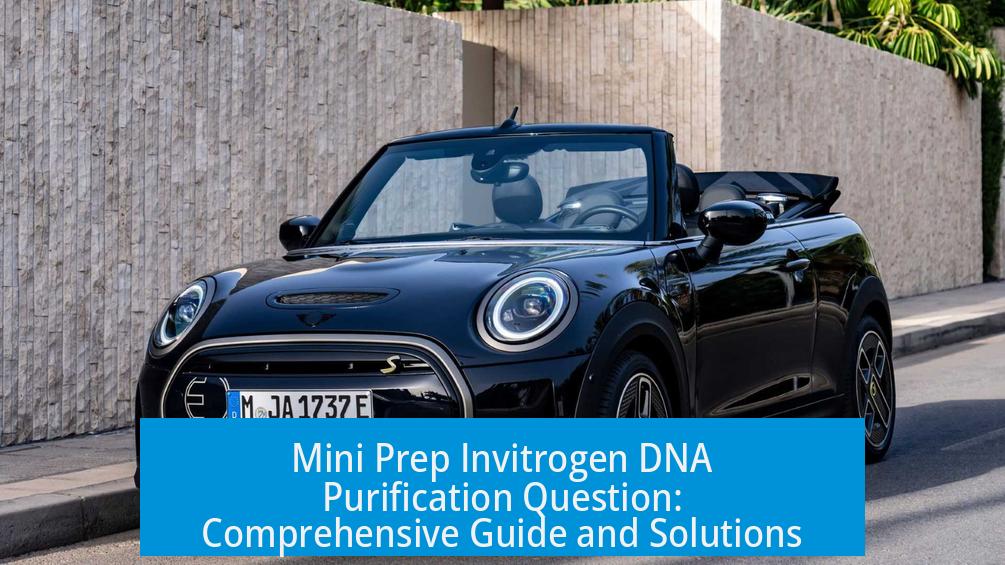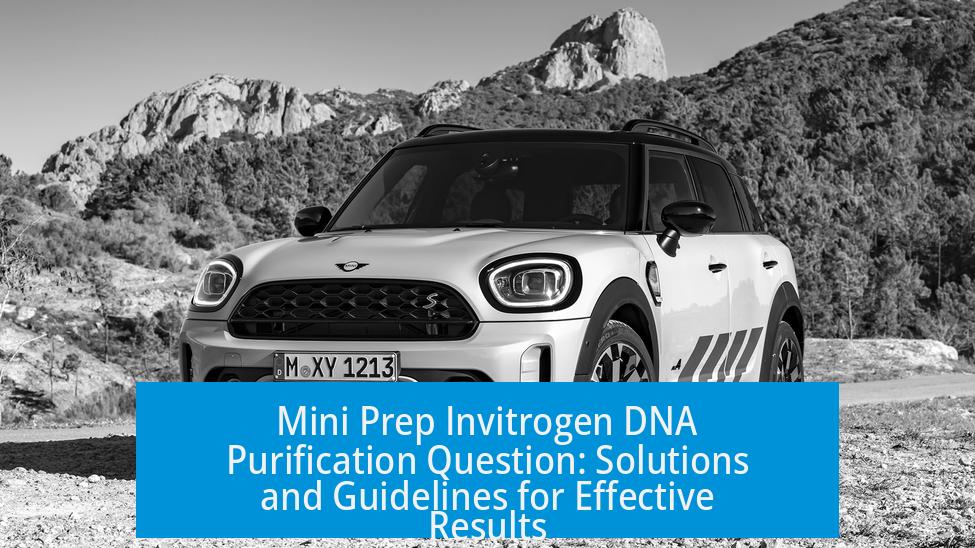Mini Prep Invitrogen DNA Purification Question: Comprehensive Guide and Solutions

Mini prep Invitrogen DNA purification involves multiple precise steps, and problems can arise at various stages—from bacterial transformation to pellet handling. Understanding troubleshooting tips, kit differences, bacterial culture handling, and DNA quality assessment greatly improves results.
General Troubleshooting of Mini Prep DNA Purification
Plasmid purification may seem basic but is often highly sensitive to small variations. Multiple factors could impact success. Identifying the exact problem requires systematic checks.
- The simplest diagnostic method is running the plasmid prep on an agarose gel. This reveals whether DNA is present or if it was lost during precipitation or other steps.
- DNA pellets are often transparent and can be hard to see. Sometimes you might appear to lose the pellet but find it after adding resuspension buffer.
- Pellets form near the tube hinge bottom if centrifuged with hinges up. Misplacing tubes can lead to missing pellets.
- During pellet drying, use your sense of smell as a guide. If the tube smells of alcohol, drying should continue; absence of smell indicates readiness.
- Avoid overdrying pellets. Prolonged drying (like one hour) can harden the pellet, making resuspension difficult. Five to ten minutes is generally sufficient.
Kits, Protocols, and Reagents: What to Know

Miniprep kits vary considerably. Some older protocols include alcohol precipitation after elution, which adds an inconvenient, outdated step.
- Modern kits from vendors like Qiagen, Thermo (GeneJET), and NEB (Monarch) use efficient, column-based protocols without precipitation steps.
- Kits requiring addition of ethanol to buffers require careful preparation by users. Missing ethanol can cause precipitation failures.
- Cross-using buffers between kits (e.g., midiprep buffer in miniprep kits) is occasionally possible but not recommended without validation.
- Automated instruments like the GenScript AmMag Quatro now handle plasmid prep without manual intervention, reducing user error.
Handling Bacterial Cultures and Transformation
Successful DNA purification depends on proper bacterial transformation and culture management.
- Transform competent cells correctly using heat-shock or electroporation with your plasmid. Skipping transformation results in untransformed bacteria and no plasmid.
- Selection is crucial. Always grow transformed cells on antibiotic plates matching your plasmid resistance marker to avoid culturing random bacteria.
- Streak broth cultures onto agar plates to isolate colonies for pure cultures. Incubate plates for 10–12 hours at 37°C (or longer at lower temperatures).
- Maintaining small culture aliquots at 4°C provides a backup for restarting cultures in case of contamination or other issues.
Yield and Concentration Issues: Common Causes
Low DNA yield frequently arises from factors related to plasmid copy number and procedural errors.
- Plasmids vary in copy number. Low-copy plasmids inherently yield less DNA than high-copy plasmids.
- Overloading mini prep columns by lysing too many cells reduces DNA binding efficiency and damages yield.
- Losses commonly occur during isopropanol or ethanol precipitation steps, especially with high-copy plasmids.
- Elution volume and soaking time affect concentration. Allow the elution buffer to soak in the spin column for about 30 minutes for better recovery, using 40 μL for a concentrated product.
- Typical yields of 1 μg DNA in 50 μL volume are sufficient for many downstream applications.
Important Protocol Steps and Common Mistakes to Avoid
Precise execution of protocol steps determines final DNA quality and yield.
- Resuspend cell pellets thoroughly. Vortex until completely dissolved at crucial steps (e.g., cell resuspension). Cloudiness during resuspension indicates incomplete processing requiring more mixing.
- Care with ethanol washes is vital. Improper handling can cause DNA loss if the pellet is disturbed or not recovered fully.
- Pellets from alcohol precipitation often appear as smears and can be elusive; handle tubes gently to avoid losing sample.
- Manage drying times carefully. Overdrying hampers DNA solubility; typically, 10-15 minutes is adequate.
- Consistent timing with a timer during drying and incubation steps improves reproducibility and reduces variability.
Assessment of DNA Quality: Measuring Success
Evaluating DNA purity and integrity ensures suitability for downstream use.
- Agarose gel electrophoresis offers valuable visual confirmation beyond spectrophotometry. Seeing expected plasmid bands confirms successful prep.
- NanoDrop readings can be inconsistent. Many labs nickname it the “random number generator” due to variable results.
- Assess purity with A260/A280 ratios ideally near 2.0. Lower ratios suggest protein contamination; A260/A230 indicates other impurities.
Additional Tips for Better Mini Prep Handling
- Linearize plasmid DNA with restriction enzymes prior to gel electrophoresis for clearer band patterns.
- Add glycogen as a carrier in precipitation steps where DNA amounts are minimal. For example, 1 μL of 10 mg/mL glycogen improves precipitation efficiency.
- Resuspend DNA in smaller volumes than specified to increase concentration. For instance, dissolving in 10–15 μL instead of 50 μL.
- Dilute DNA samples after quantification to reach desired working concentrations for downstream protocols.
- Maintain gentle handling during cell lysis, washing, and elution to avoid shearing or loss of DNA.
Summary of Key Points
- Running purified DNA on agarose gel is the most effective troubleshooting step.
- Modern column-based kits avoid inconvenient alcohol precipitation steps.
- Proper bacterial transformation and selection ensure plasmid presence.
- Avoid overloading columns; lower starting material can yield better quality DNA.
- Pellet drying requires balance—not underdrying (alcohol contamination) nor overdrying (hard pellets).
- NanoDrop results should be supplemented with gel verification for DNA quality.
- Practice careful vortexing, ethanol washes, and elution incubation for optimal results.





Leave a Comment